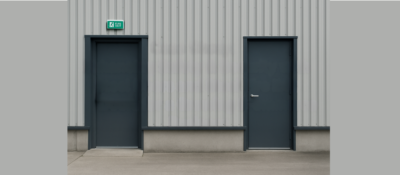When it comes to protecting your property, roller shutters remain one of the most effective and versatile physical security solutions available. Whether you’re safeguarding a shopfront, warehouse, garage, or family home, the right shutter can deter intruders, reduce heat loss, and improve your property’s appearance.
However, with so many options on the market, it can be difficult to know where to start. This guide will walk you through the different types of security shutters, materials, operation systems, and essential features -so you can confidently choose the right solution for your needs.
Understanding the Main Types of Security Shutters
Different properties have different security priorities. Here’s a breakdown of the main roller shutter options and their ideal uses:
Perfect for homeowners looking to enhance security without compromising on appearance. These shutters are compact, lightweight, and available in a range of colours and finishes to complement your home’s exterior. They can also help insulate windows and reduce noise.
2. Commercial Roller Shutters
Designed for shops, offices, and business premises, commercial shutters offer a balance between strength, durability, and visibility. Many businesses choose perforated or punched lath designs, which allow for product display while maintaining security outside of business hours.
Essential for areas that need fire compartmentation, such as kitchens, storage facilities, or industrial environments. Fire-rated shutters can resist fire and smoke for a specified period (typically 1–4 hours), helping to contain fires and protect escape routes.
These combine security with thermal and sound insulation benefits. Ideal for warehouses, garages, and buildings where temperature control or noise reduction is important. They help lower energy bills by keeping warmth in during winter and heat out in summer.
For sites at greater risk of intrusion or vandalism - such as banks, government buildings, or high-value retail units - high-security shutters provide reinforced protection, often tested to LPS 1175 security ratings.
Materials and Finishes Explained
The material you choose will affect your shutter’s strength, appearance, and price.
At Security Direct, all shutters are available in a variety of finishes and coatings to ensure long-lasting durability and weather resistance.
Manual or Electric? Choosing the Right Operation
Roller shutters can be operated manually or electrically, and each option offers unique advantages.
Tip: If you’re installing multiple shutters, an electric option with group control can make daily operation much easier.
Key Factors to Consider Before Buying
When choosing your roller shutter, keep these points in mind:
Installation and Maintenance Tips
Proper installation is crucial for safety and longevity. Security Direct offers supply-only shutters for DIY installation and professional installation services for more complex systems.
To keep your shutter performing at its best:
These simple steps can extend the lifespan of your shutter and prevent costly repairs later on.
Why Choose Security Direct
At Security Direct, we’ve been protecting homes and businesses across the UK for over 30 years. We supply one of the largest ranges of roller shutters and security doors, designed to meet both domestic and commercial needs.
Whether you need a sleek shutter for your home or a high-security solution for your business, we’ll help you find the perfect fit.
FAQs
1. What is the best type of roller shutter for home security?
Aluminium roller shutters are ideal for residential use - they’re strong, lightweight, and visually appealing. For added insulation, choose an insulated roller shutter model.
2. Can roller shutters be colour-matched to my property?
Yes! Most shutters can be powder-coated in any RAL colour to match your doors, windows, or shopfront branding.
3. Do electric roller shutters need regular servicing?
It’s recommended to have them serviced annually to ensure the motor, control system, and safety brakes are functioning properly.
4. Are roller shutters noisy?
Modern shutters are designed for smooth, quiet operation. Regular cleaning and lubrication can further reduce noise.
Conclusion
Choosing the right roller shutter is about more than just security - it’s an investment in your property’s comfort, efficiency, and peace of mind. By understanding the types, materials, and features available, you can make an informed choice that suits your needs and budget.
Explore our full range of roller shutters today or contact our friendly team for expert advice on the best solution for your home or business.

Discover how Security Direct supplied and installed a full suite of steel doors and steel fire exit ...

Discover the differences between steel doors, metal fire doors, fire exit doors, and external securi...

A growing technology firm approached Security Direct after expanding into a new open-plan office spa...